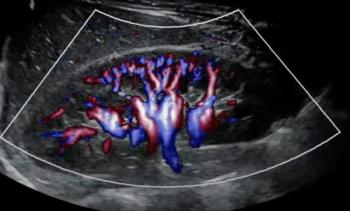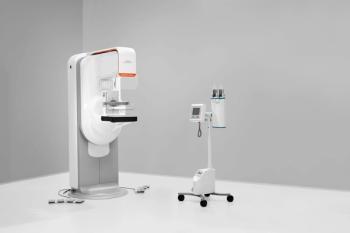
‘Care areas’ characterize GE approach to ultrasound
GE Healthcare this week introduced two tailored, highly portable ultrasound systems, one for emergency medicine, the other for anesthesia. Although these systems are narrowly focused in the clinical sense, they reflect a multifaceted corporate approach to ultrasound that leverages different technologies to achieve specific goals.
GE Healthcare this week introduced two tailored, highly portable ultrasound systems, one for emergency medicine, the other for anesthesia. Although these systems are narrowly focused in the clinical sense, they reflect a multifaceted corporate approach to ultrasound that leverages different technologies to achieve specific goals.
From a clinical perspective, the company is focusing on care areas defined by specific practices of medicine and addressed by certain technologies. GE's Logiq e Anesthesia Edition and Logiq e Emergency Medicine Edition, the two portable systems introduced last week, are fitted to the needs of specialists. They bring specific algorithms and presets designed to boost productivity and boost an already booming demand for hand-carried ultrasound (see sidebar).
In a broader sense, GE is addressing "care areas" with its more powerful cart-based systems, leveraging volumetric imaging to boost productivity and improve image quality for specific applications.
In an interview with DI SCAN, Terri Bresenham, vice president of diagnostic ultrasound and IT clinical systems, explained how the company is automating applications that run in these care areas for its cart-based Logiq systems. The catalyst is volumetric scanning, whereby whole areas of the body are swept with a transducer and the more mundane duties algorithmically divided up.
"Volumetric capabilities are designed to help improve diagnosis as well as workflow," Bresenham said.
Volumetric enhancements showcased at the RSNA meeting provide a tomographic image of the breast on the Logiq platform, providing coronal, sagittal, and transaxial views without going through the reformatting steps, or a surface-rendered image. The new visualizations are presented either at the console or on GE's VuePoint workstation.
Enhancements in abdominal ultrasound leverage 3D imaging to provide slices, as they do in the breast, and to calculate the volumes of certain tissues, such as cysts. In GE's obstetric care area, 3D algorithms color-code and then calculate the volumes of tissues such as a polycystic ovary or follicle. In neonatal imaging, they are used to measure the volume of the infant brain.
At RSNA 2007, GE also featured vascular imaging as another key care area, where enhancements improved image quality as well as productivity. Data gathered during an exam are automatically input to a structured report, Bresenham said. To get the most productivity, company engineers designed the system to transfer data to GE's VuePoint workstation, as the presentation of these data on the console would otherwise tie up the system.
Automating measurements and image presentation is the key, according to Bresenham, as GE looks for ways to make the operation of ultrasound systems easier and more convenient. It is a trend that will lead the company into the extended use of computer-aided diagnosis. Already the company is using CAD to detect pathologies in breast tissue and congenital defects in the fetal heart. Volumetric imaging is paving the way.
"What opens the door is when I go from a 2D world to 3D," she said. "I have a much better grasp of feature detection, a must better grasp of functionality and tissue dynamics. That is where ultrasound is going."
Newsletter
Stay at the forefront of radiology with the Diagnostic Imaging newsletter, delivering the latest news, clinical insights, and imaging advancements for today’s radiologists.




























